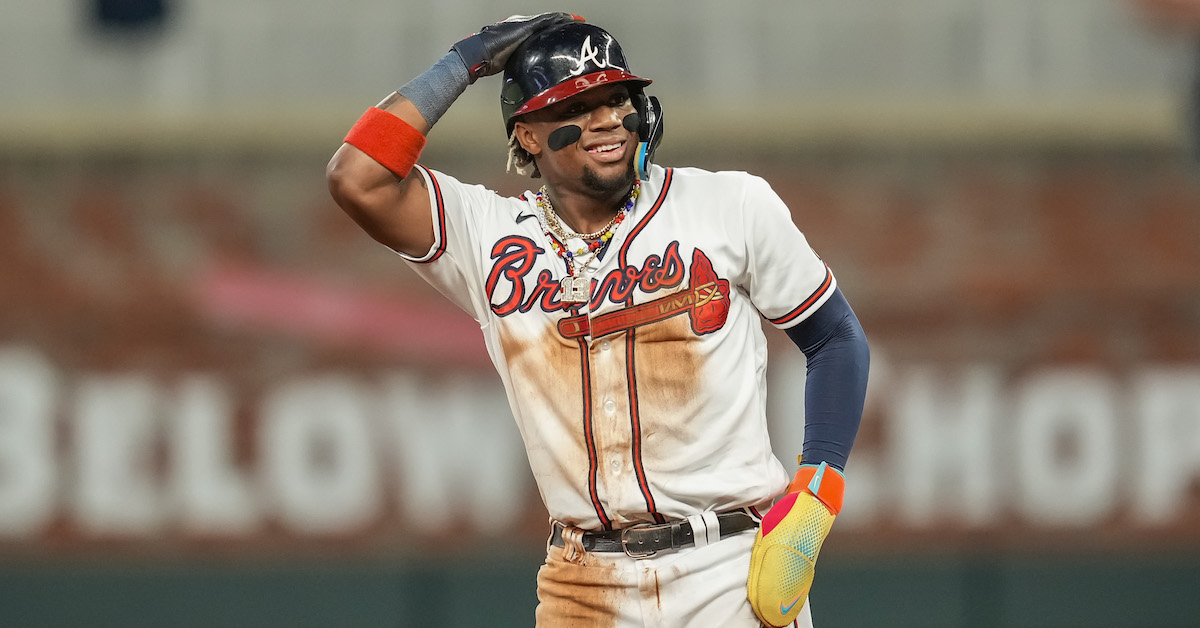40–70 Is Cool. You Know What’s Cooler? Ronald Acuña Jr.

It’s one thing to join a club, but it’s another thing to start your own club entirely. That goes doubly so when the requirements to enter your club are harder to obtain than a liquor license in 1928. Ronald Acuña Jr. had already earned his 40–40 membership last Friday. That was the hot club in town back in 1988 when Jose Canseco started it up, but with five members now, it’s not quite as exclusive as it once was. So Acuña started up his 40–70 club, and he gets the prime parking space. And still not quite 26, there’s more time to start up some new clubs.
I tend to have mixed feelings about these clubs in baseball. They’re undeniably cool, in the way we’re all attracted to round numbers, and the key clubs and milestones give us an underpinning to compare accomplishments across baseball history. There’s something satisfying about experiencing the game in a similar fashion to someone 30 or 50 or 75 years ago as a shared cultural event, and these number-based chases are a big part of that. On the other hand, they also tend to be somewhat arbitrary in their construction and focus on a different direction than the one I’m interested in: what numbers mean rather than what they are.
When I’m not thinking about how fun something like a 40–70 club is or a 50–50 club would be, I can’t help but ask myself, “Hey, wouldn’t the 46–68 club have been a lot more meaningful than 40–70?” And the HR–SB club, unlike hitting 400 homers, has the added baggage of comparing two very different things with very different values. At least the Triple Crown isn’t a bad model of offense if you don’t have OBP and SLG; homers, batting average, and RBI cover most offensive contributions, even if the weighting is rather inaccurate.
The 40–70 club isn’t something I’d give extra credit for in an MVP vote; Acuña’s homers and stolen bases are already part of his statistical record. But thankfully, I’m not an MVP voter this year, so trying to separate Acuña and Mookie Betts is a problem I’m relieved to not have to unwind. My colleague Jay Jaffe made an excellent case for why he might break the tie in Betts’ favor. I’ll give a counterpoint in Acuña’s favor, but it has little to do with club membership and more about defense. While there’s some additional value to Betts’ flexibility, at the same time, there’s simply far more uncertainty around defensive numbers than offensive ones.
But if you’re not tired already of the MVP arguments, I guarantee you’ll be exhausted with it nearly two months from now when the award is announced. So let’s talk about something more fun, like the chance that Acuña can manage to top himself in the future with more than a full healthy season back under his belt. Read the rest of this entry »







